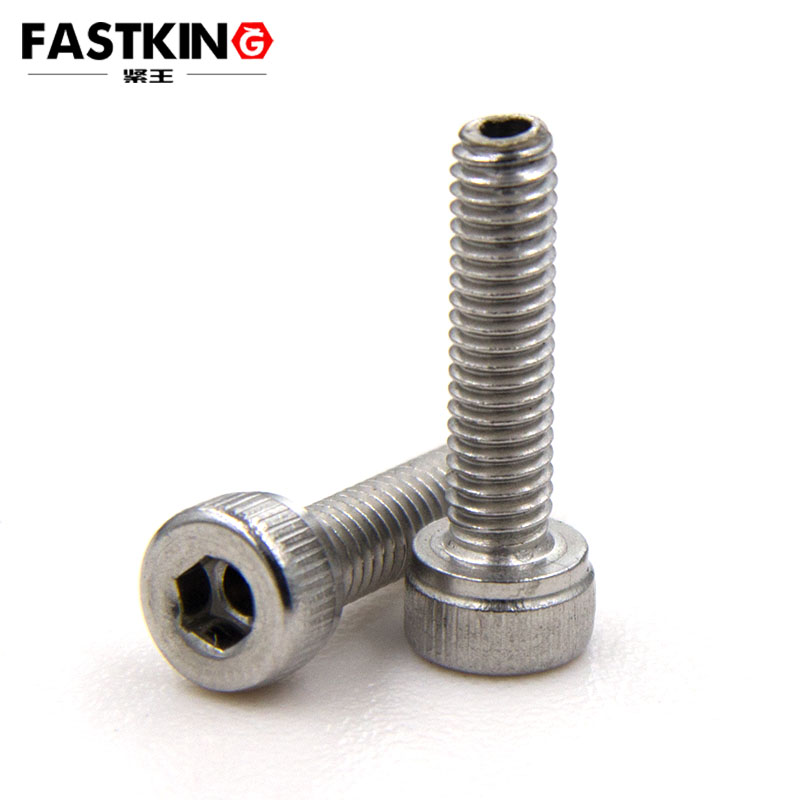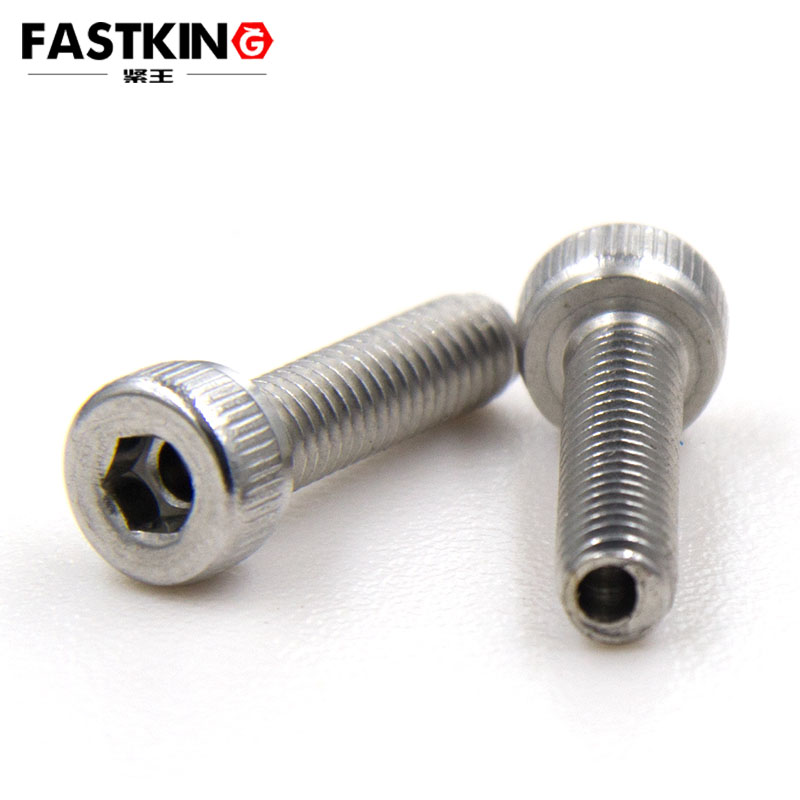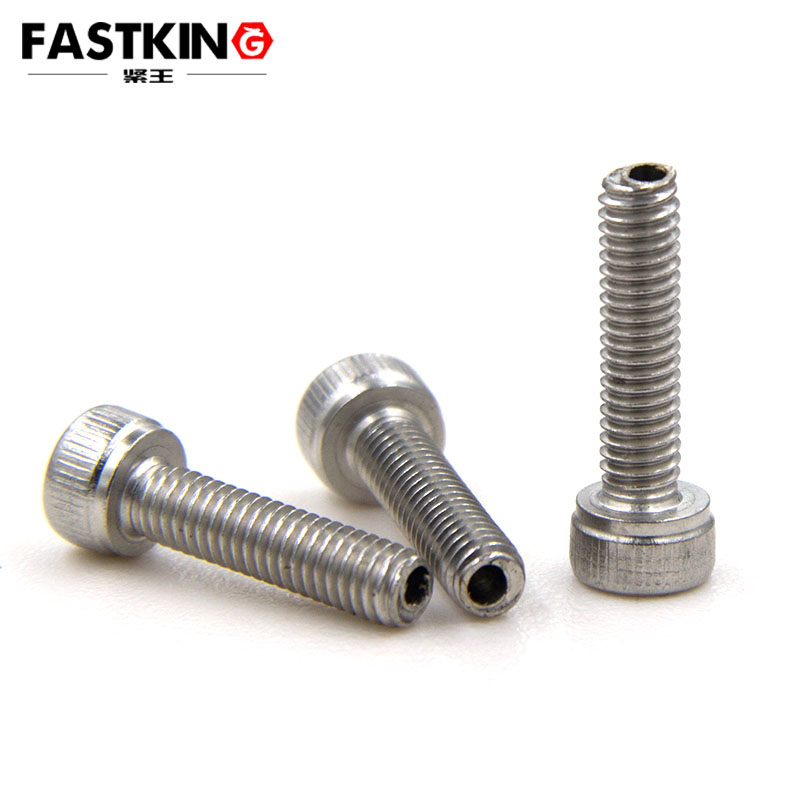 In modern industry, mechanical manufacturing, architectural decoration, and numerous everyday applications, fasteners play an indispensable role. Among them, 304 hex socket cap screws, as high-quality fasteners, have garnered widespread attention and favor due to their unique design and superior performance. This article will provide a detailed introduction to the usage methods and significant advantages of 304 hex socket cap screws.
In modern industry, mechanical manufacturing, architectural decoration, and numerous everyday applications, fasteners play an indispensable role. Among them, 304 hex socket cap screws, as high-quality fasteners, have garnered widespread attention and favor due to their unique design and superior performance. This article will provide a detailed introduction to the usage methods and significant advantages of 304 hex socket cap screws.I. Definition and Features of 304 Hex Socket Cap Screws
A 304 hex socket cap screw is a fastener made from 304 stainless steel. Its head features a hexagonal socket design, which ensures stability during installation and removal, prevents slipping, and saves space, making it particularly suitable for use in narrow or confined environments. Moreover, the 304 stainless steel material endows it with excellent corrosion resistance, high-temperature resistance, and high strength, allowing it to maintain stable performance in various harsh environments.

II. Usage Methods of 304 Hex Socket Cap Screws
(1) Tool Preparation
Before using a 304 hex socket cap screw, it is essential to prepare the appropriate tools. An Allen wrench (hex key) is typically required. Select the correct size of the Allen wrench based on the screw's dimensions and specifications to ensure a snug fit between the tool and the hex socket of the screw head. This prevents slipping or damage to the screw during operation.
(2) Installation Steps
1. Inspect the Threaded Hole**: Before installing the 304 hex socket cap screw, carefully check the threaded hole to ensure it is clean and free of debris, with intact threads. If there are metal shavings, dust, or other contaminants in the hole, the screw may not screw in smoothly or may damage the threads. Therefore, cleaning the hole with compressed air or a soft brush is an important step.
2. Align with the Threaded Hole**: Position the threaded end of the 304 hex socket cap screw over the hole, ensuring that the screw's centerline aligns with the hole. During alignment, gently rotate the screw to guide it smoothly into the hole. Misalignment can cause the screw to tilt when tightened, affecting the fastening effect.
3. Manual Pre-tightening**: After the screw has entered the hole, manually rotate it to gradually tighten it. The purpose of manual pre-tightening is to avoid damaging the screw or misaligning the threads when using a tool. Maintain even pressure while rotating the screw by hand until it can be screwed in smoothly and the head makes good contact with the surface of the component being fastened.
4. Tighten with a Tool**: Once the screw has been pre-tightened manually, use an Allen wrench to complete the tightening process. Insert the wrench into the hex socket of the screw head, ensuring a snug fit. Then, turn the screw clockwise with even pressure. During tightening, avoid excessive force to prevent damage to the screw or the threaded hole. Ensure that the screw head is in close contact with the component's surface to achieve a secure fastening effect.
5. Check Fastening Effect**: After tightening, inspect the fastening effect. Check whether the screw is tightened properly, whether the head is in close contact with the component's surface, and whether there is any looseness. If the screw is not tightened properly or if there is looseness, retighten it immediately. Additionally, inspect the surrounding components for any deformation or other issues caused by tightening the screw to ensure the safety and reliability of the entire connection system.
(3) Removal Steps
1. Loosen with a Tool**: When removing a 304 hex socket cap screw, an Allen wrench is also required. Insert the wrench into the hex socket of the screw head and turn it counterclockwise to loosen the screw. During loosening, if the screw has not been moved for a long time or is in a humid environment, it may become rusted or seized. In such cases, apply a penetrating oil or lubricant to the connection between the screw and the threaded hole, wait for a few moments, and then attempt to loosen the screw again.
2. Manual Unscrewing**: After the screw has been loosened, manually rotate it to unscrew it partially. The purpose of manual unscrewing is to avoid damaging the screw or the threaded hole when using a tool. Maintain even pressure while rotating the screw by hand until it can be unscrewed smoothly from the hole.
3. Clean the Threaded Hole**: After the screw has been removed, promptly clean the hole to remove any debris, such as metal shavings, dust, or lubricant. Cleaning the hole prevents the accumulation of contaminants that could affect subsequent installations or usage. Additionally, inspect the threads of the hole for any damage or excessive wear. If damage or severe wear is detected, repair or replace the hole promptly to ensure its proper use.

III. Advantages of 304 Hex Socket Cap Screws
(1) Excellent Corrosion Resistance
The 304 stainless steel material is a core advantage of 304 hex socket cap screws. This material contains high levels of chromium and nickel, which provide excellent corrosion resistance in various environments. Whether in humid air, seawater, or chemical exposure, 304 hex socket cap screws can maintain stable performance and resist rust and corrosion. This characteristic makes them widely used in architectural decoration, marine equipment, and chemical devices. For example, in coastal building structures, 304 hex socket cap screws can effectively withstand the erosion of seawater and salt spray, extending the service life of fasteners and reducing maintenance costs.
(2) High Strength and Reliability
In addition to excellent corrosion resistance, 304 stainless steel also offers high strength. 304 hex socket cap screws can withstand significant tensile and compressive forces, ensuring a secure and reliable connection. In mechanical manufacturing and industrial equipment, the strength of fasteners is crucial. The high strength of 304 hex socket cap screws meets various high-strength connection requirements, such as in the assembly of heavy machinery and the tightening of automotive engine components. Moreover, 304 stainless steel has good toughness, which allows it to resist impact and vibration to some extent, further enhancing the service life and reliability of the screws.
(3) Space-saving and Convenient Installation
The hex socket design of 304 hex socket cap screws is another significant advantage. Compared to traditional hex head screws, the head of a hex socket screw is more compact and occupies less space. This design makes it particularly suitable for use in confined environments, such as inside electronic devices or in the assembly of precision instruments. In these applications, space utilization is critical, and hex socket screws can effectively save space without compromising fastening effectiveness. Additionally, the hex socket design ensures stability during installation and removal, preventing slipping. When using an Allen wrench, the tool fits snugly into the hex socket, providing better torque transfer and avoiding damage to the screw or operational errors caused by slipping. This convenient installation method not only improves work efficiency but also reduces labor intensity, especially in applications where frequent installation and removal are required.
(4) Aesthetic and Decorative Appeal
In applications where aesthetics are a high priority, 304 hex socket cap screws can also meet these requirements. The surface of 304 stainless steel is smooth, with uniform color and good luster, giving it an attractive appearance. This characteristic makes 304 hex socket cap screws not only practical fasteners but also decorative elements. For example, in architectural decoration, they can be used to connect metal components or glass curtain walls. Their silver-white appearance complements modern architectural styles, adding a touch of refinement and elegance. Additionally, in the manufacturing of high-end furniture and lighting products, 304 hex socket cap screws are often used to connect components, ensuring structural stability while enhancing the overall aesthetic appeal of the product.
(5) Good High-Temperature Resistance
304 stainless steel also exhibits good high-temperature performance. 304 hex socket cap screws can maintain their physical and mechanical properties in high-temperature environments. In industrial equipment such as boilers and engines, the high-temperature resistance of fasteners is crucial. 304 hex socket cap screws can operate normally in high-temperature conditions without experiencing a decrease in strength, deformation, or damage. This characteristic enables them to meet the demands of various high-temperature application scenarios, ensuring the safe operation of equipment.

IV. Applications
Due to their numerous advantages, 304 hex socket cap screws are widely used in various fields. In the construction industry, they are employed to connect steel structures, curtain wall systems, and roof structures, effectively withstanding harsh weather and environmental conditions to ensure the long-term stability and safety of building structures. In mechanical manufacturing, 304 hex socket cap screws are used to assemble various mechanical devices, such as machine tools, automobiles, and motorcycles. Their high strength and reliability provide a solid guarantee for the normal operation of equipment. In electronic device manufacturing, they are used to fix circuit boards and enclosures.
